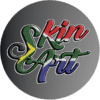At Skinart Training, we are devoted to providing top-tier educational content anchored in internationally recognized standards and best practices. Our goal is to cultivate outstanding professional conduct and ensure the utmost safety within the body art industry. Despite the variability of regulations in different regions, our curriculum instils fundamental principles and expertise that serve as a substantial foundation. This empowers practitioners to conform and adeptly apply their skills in alignment with local legal stipulations.
Our training offerings encompass a broad range of essential safety and regulatory topics, tailored to support comprehensive knowledge and adherence to international best practices:
World Health Organization (WHO) Guidelines:
- For health-related subjects, such as bloodborne pathogens, we rely on WHO’s international best practices.
- Reference: “WHO Guidelines on Hepatitis B and C Testing” and “WHO Best Practices for Injections and Related Procedures Toolkit.”
International Standards Organization (ISO) Standards:
- We reference ISO standards for quality management and procedural directives.
- Reference: “ISO 9001:2015 – Quality Management Systems” for maintaining documentation and managing business processes effectively.
Occupational Safety and Health Administration (OSHA) Guidelines:
- OSHA’s guidelines inform our approach to workplace safety and bloodborne pathogen training, serving as an international benchmark.
- Reference: “OSHA’s Bloodborne Pathogens Standard (29 CFR 1910.1030).”
Comprehensive Health and Safety Training:
- Personal Protective Equipment (PPE) Use: Trainees learn the correct selection, usage, and disposal of PPE to mitigate occupational hazards.
- Material Safety Data Sheets (MSDS) & Chemical Safety: Our courses include critical understanding of MSDS and the safe handling of chemicals in the workplace.
- Risk Assessment: We provide thorough training on conducting risk assessments to identify and manage potential risks in the body art studio environment.
- Body Art Code of Conduct: Students are familiarized with the professional code of conduct, ensuring ethical and responsible practice within the industry.
All trainees receive the complete WHO Health & Safety File and are apprised of the prevalent codes of practice, regulations, and standards within the body art domain. It’s vital to recognize that no uniform international regulations govern tattooing and body art. Practitioners are bound by the local laws of the regions they operate in. However, our international standards-based training materials furnish a robust groundwork to develop local-specific regulatory insights.
